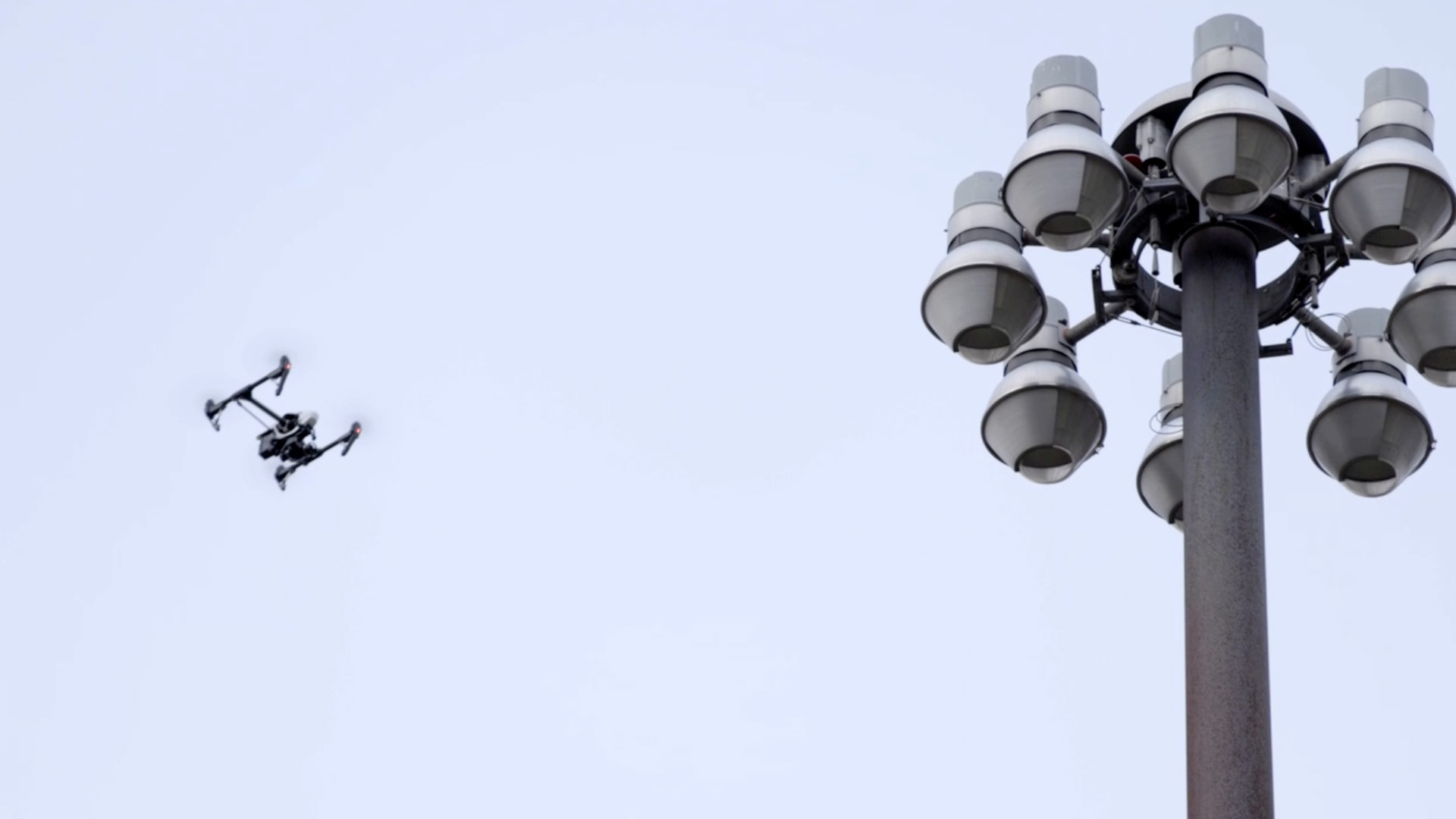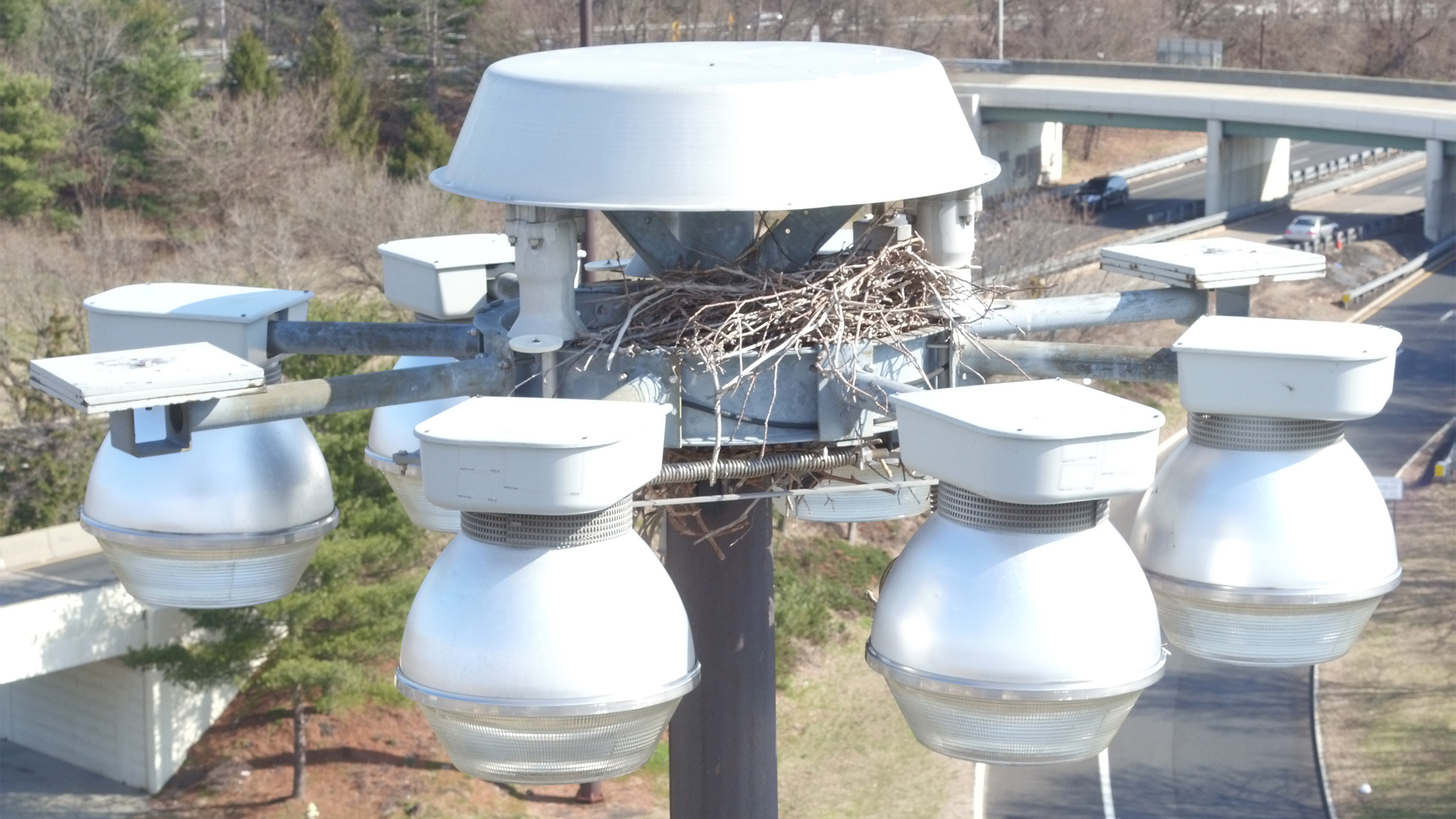Flying the high masts
A New Jersey drone pilot and an engineer contracted by the state to inspect hundreds of light towers next to busy highways demonstrated that unmanned aircraft can indeed do a job that once required removing guard rails, closing traffic lanes, and hoisting an engineer 100 feet up to the top of the structure for a hands-on inspection. Their success supports a case for broader implementation of drones for infrastructure inspection.
Completing the light tower inspections with a quadcopter proved feasible, if not always easy, said George Finlay, an AOPA member, a certificated airline transport pilot with more than 10,000 hours flown in manned aircraft, and a certificated remote pilot. Finlay was hired as a subcontractor on an inspection project funded by New Jersey taxpayers that significantly reduced the cost and traffic congestion that would otherwise have resulted from the periodic inspections, according to state officials.
“The resolution was just incredible,” said Mitchell, in a telephone interview. “You could take such great shots, it was amazing.”
Finlay, who began commercial operations under a Section 333 authorization prior to the advent of Part 107, brought aeronautical, regulatory, and airspace expertise to the project that Mitchell said was “more valuable to the whole inspection project than the drone itself.”

Several towers were located in areas where airspace authorization was required, and securing the necessary approvals was part of Finlay’s job, along with serving as remote pilot in command. Finlay said the process of securing FAA approvals where required went smoothly: “It wasn’t a show-stopper by any means.”
Mitchell was primarily focused on finding cracks or other structural defects that would indicate a danger of structural failure, which has been known to happen. Glenn Stott, the unmanned aircraft systems coordinator with the New Jersey Department of Transportation’s Bureau of Aeronautics, has been working with counterparts in other states as well as his own staff to explore a range of potential missions and applications for drones.
“Our UAS program is looking to capitalize on the efficiencies of drones for all inspection missions,” Stott said in a telephone interview, adding that mapping, 3-D modeling, and measuring the volume of piles of material are also missions well-suited to drones, which can complete such jobs in significantly less time, at lower cost, and with reduced risk to personnel and the traveling public. In October, he hosted a gathering of counterparts from five state transportation agencies to share best practices and lessons learned.
“It was very, very successful,” Stott said, adding that the U.S. Department of Transportation is paying attention, and plans a larger gathering for the same purpose this month. “They’re looking to have it as a national program now.”

Mitchell said that his own employer is also contemplating what other types of infrastructure inspections can be handled with an unmanned aircraft. Flying with Finlay was Mitchell’s first exposure to unmanned aircraft systems, and he came away convinced that while they may not be the only tool needed for every job, drones will certainly be an important tool for inspection of bridges, high-voltage power lines, and other hard-to-reach structures. While the drone has limits, it certainly beats a pair of binoculars—another method used for some such inspections in the past, or a high hoist by a bucket truck requiring hours of setup and lane closures, and the traffic congestion that ensues.
Mitchell said that the low-angle winter sun also complicated matters a bit, limiting the hours when the structure would be sufficiently lit to capture images with the detail required.
“If we did it in the future with this same situation... I would suggest doing it in the summer,” Mitchell said.




